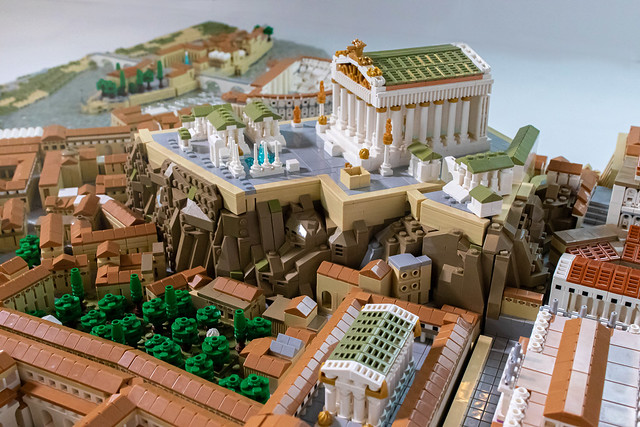Check out this incredibly huge and detailed LEGO diorama of the Eternal City, Rome
It is rare for a LEGO build to make my jaw drop and leave me drooling on my keyboard, but that is just what this stunning layout of Imperial Rome by Rocco Buttliere did. I have a Master’s degree in Classics, primarily in the Latin language, and so anything and everything Roman is right up my via, but there is a lot of great information to learn in the descriptions of the photos, even for one with an advanced degree in a tangential field. In fact, I could spend hours looking through all the pictures, and have already spent the better part of one skimming through the descriptions. It is fascinating stuff. And the build! It is huge, about 1×2 meters in size, with 66,000 bricks going into its construction. And not one is wasted or superfluous. So let’s take a brief tour of the Eternal City, shall we?
Rocco built it for the Museu da Imaginação (Museum of Imagination) in São Paulo, Brazil, and his attention to detail is certainly worthy of being enshrined in a permanent display. Every building is unique, all showing the architectural style we associate with the Romans. There are innumerable fora, aqueducts, bathhouses, and temples galore, including my favorite, the Temple of Jupiter Optimus Maximus. He is the best and greatest Jupiter, not the cousin of an Autobot. A tap does a good job of depicting the triumphal four-horse chariot at the peak of the roof, and roller skates and hooks add other details to the temple. I love the use of vent slopes for microscale tile roofs.
Contrary to appearances, Rocco did not build the whole city (but wouldn’t it be awesome if he did?) Most of what he built of the city is brick construction, but there were a lot of wooden structures too, allowing massive fires to destroy the place from time to time while emperors fiddled (or harped, more probably). Nero used the aftermath of the most famous fire as an opportunity to build a massive palace to his ego, and then that palace was turned into public areas after his death by the Flavians. The private lake, for example, became the Colosseum, or the Flavian Amphitheatre. This rendition of the gladiatorial arena is gorgeous, making brilliant use of brown wands and white curved modified plates.
Prior to the construction of the Flavian Amphitheatre, public spectacles were held in the Circus Maximus, a huge racetrack for chariots. It could hold over 150,000 spectators, and much more than racing happened there. Gladiator events, deaths of Christian martyrs, parades, animal shows, all happened there before the Colosseum. The Imperial Palace overlooked the circus, and emperors had their own private access direct from their house. No need to mingle with the hoi polloi. Rocco used a ton of wedge plates on their sides to recreate the slope of the stands, with their tiny gaps adding detail, and it looks great.
Heck, the whole thing looks great, but I have gushed and rambled on enough already. Check out the full album here, and brush up on your Roman architecture and history, or even better, go see it in person next time you’re in São Paulo.
The post Check out this incredibly huge and detailed LEGO diorama of the Eternal City, Rome appeared first on The Brothers Brick.





